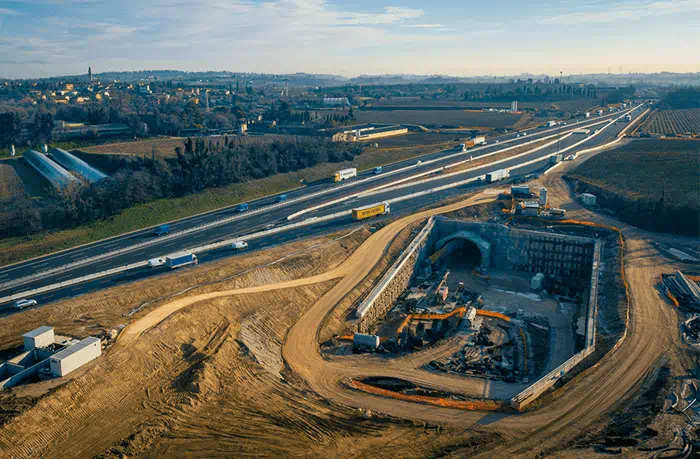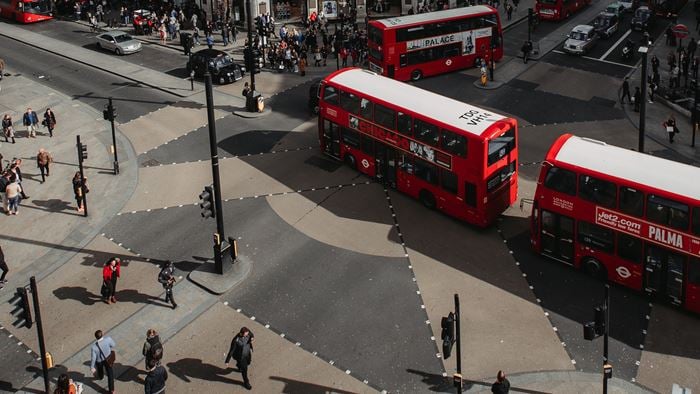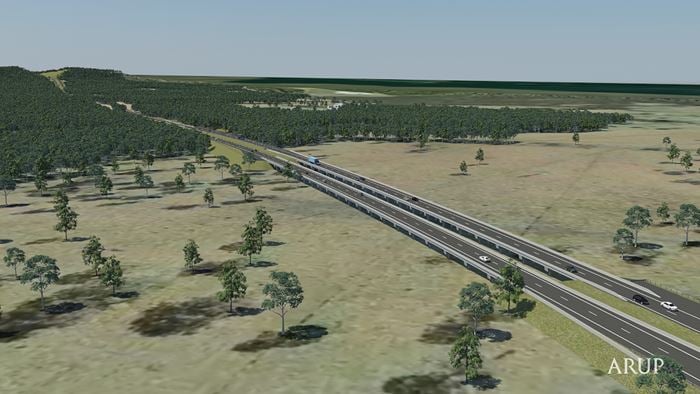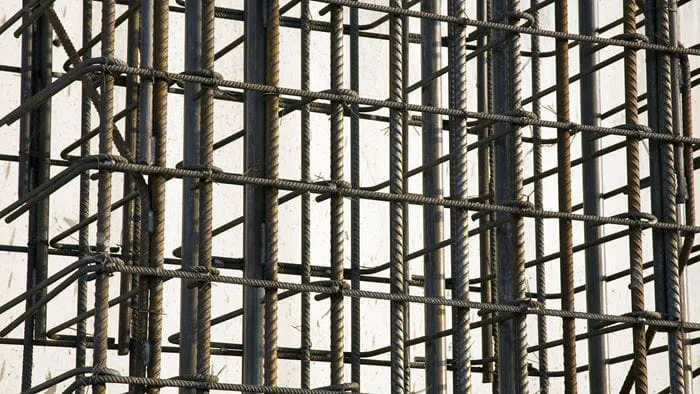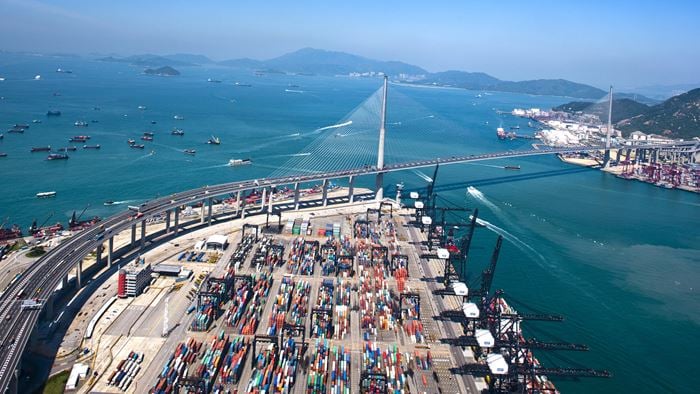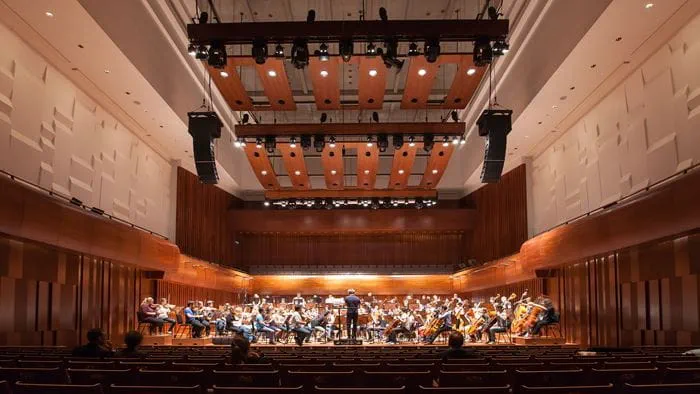In the morning and afternoon peaks, Boundary Street carries some 2,400 vehicles every hour, while the North Shore Train Line above carries close to 5,000 passengers an hour. The structure carrying the train line over Boundary Street bridge has been in place since the 1920s and was subject to regular bridge strikes causing significant delays for commuters.
In 2009, Arup and RailCorp began work on the bridge replacement to increase the span to accommodate future widening of Boundary Street, reduce the structural depth to improve vertical clearance over the road and make allowance for future quadruplication of the railway line.
Precast elements and the big slide
A modular construction with bridge slide technique was used to install the structure under a limited number of track closures.
Two 90 tonne girders, 11 cross slabs, two approach slabs and other precast components were assembled in the nearby construction yard ready for installation. The use of precast planks allowed for a reduction in disruption to the traffic on Boundary Street, by concentrating the works to a single road closure over a weekend for the main span. Over the course of a few hours overnight road closure in September 2011, the parts of the main bridge deck were trucked to the site and lifted into place.
Once the superstructure was stable, the bridge core was ready to be moved. Between midnight on Boxing Day and the morning of New Year’s Eve, the construction team had just five days to demolish the old bridge, install the new abutments, slide the new bridge into place, install new levels and ballast, restore and reconnect the tracks and overhead wiring. All works were completed over the five day road and rail closure in time to let New Year’s Eve revellers travel to and from the Sydney CBD. With the track reopened, work commenced on the two side sections of the bridge which would carry the future quadruplication tracks.
The project’s success is a testament to the ingenuity, innovation and perseverance of all involved and sets a new industry benchmark for railway bridge replacements in NSW. Boundary Street Bridge was recognised for its best practice attributed at the 2012 NSW Engineering Excellence Awards.
Improving noise levels
The replacement scheme had to incorporate means of reducing noise levels and improving the environmental conditions for residents close to the bridge. A detailed noise study identified that noise levels at nearby residential recipients exceeded acceptable industry norms on several accounts. An integral concrete bridge solution (no mechanical parts such as joints and bearings) in combination with rails directly fixed to the bridge deck was developed to address noise levels. This has resulted in better than expected noise level reductions.
The design incorporated the use of recycled shredded tyres behind the abutments to eliminate passive pressures from building up. This material was not only a sustainable and cheaper alternative to normal backfill, but also resulted in critical time savings associated with backfilling operations. This method is now being championed by the client to use in various other infrastructure projects.
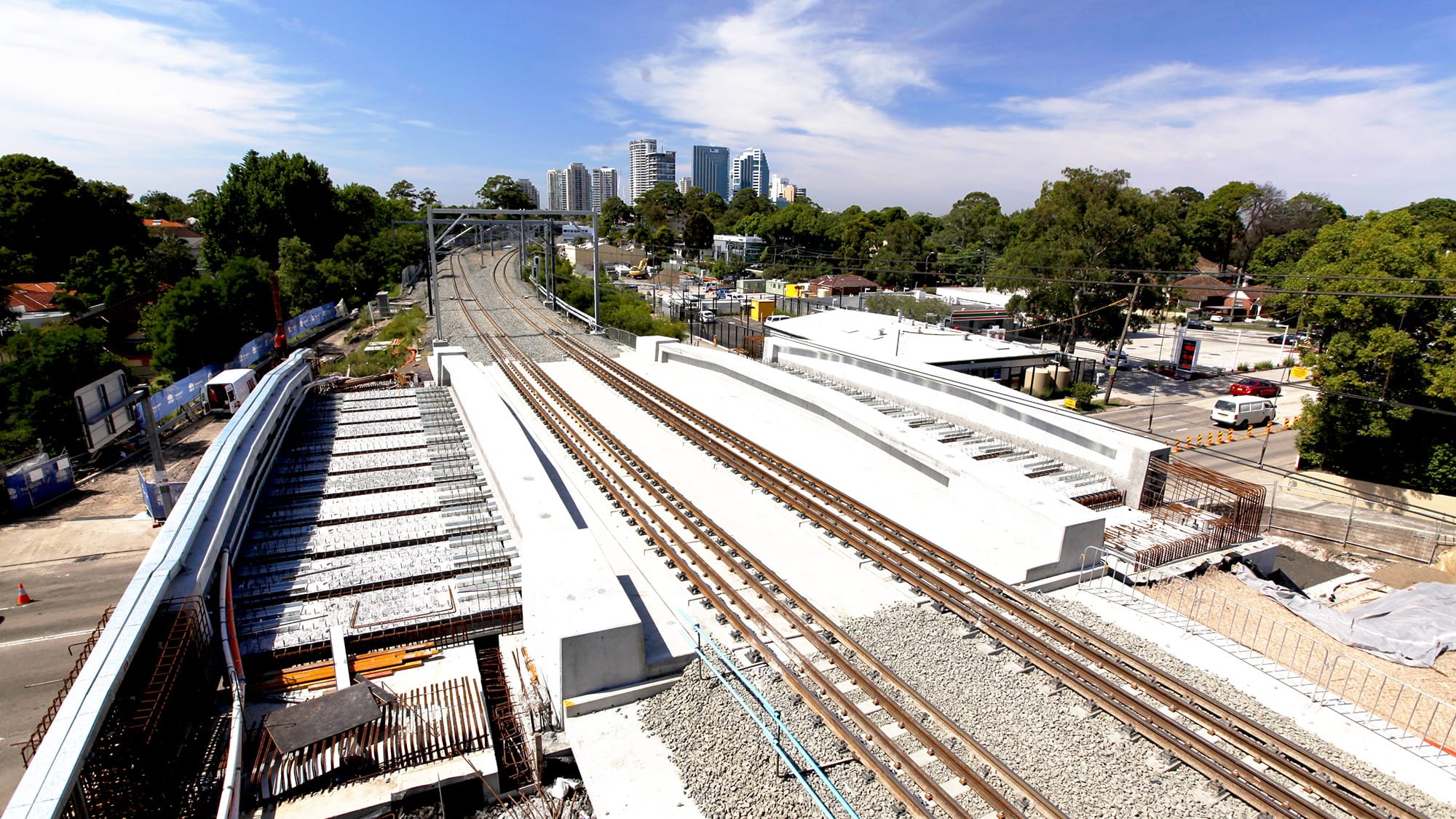 ;
;

